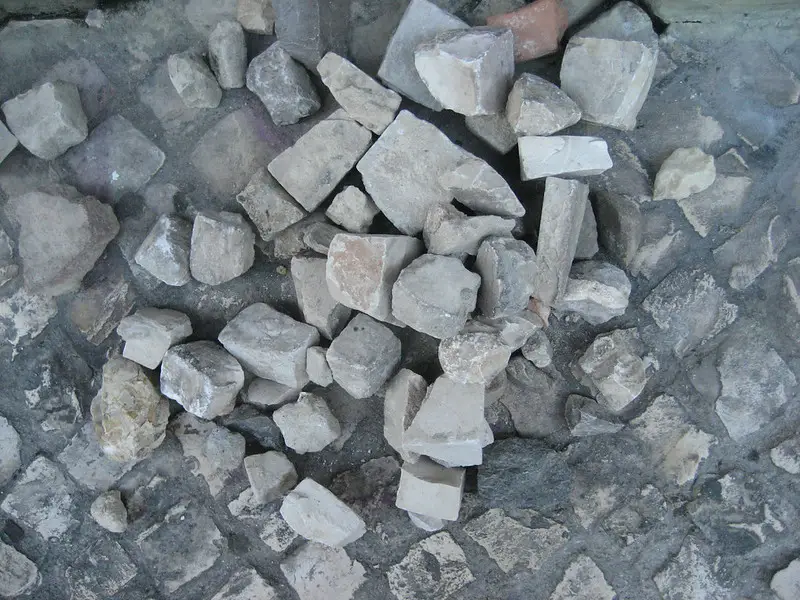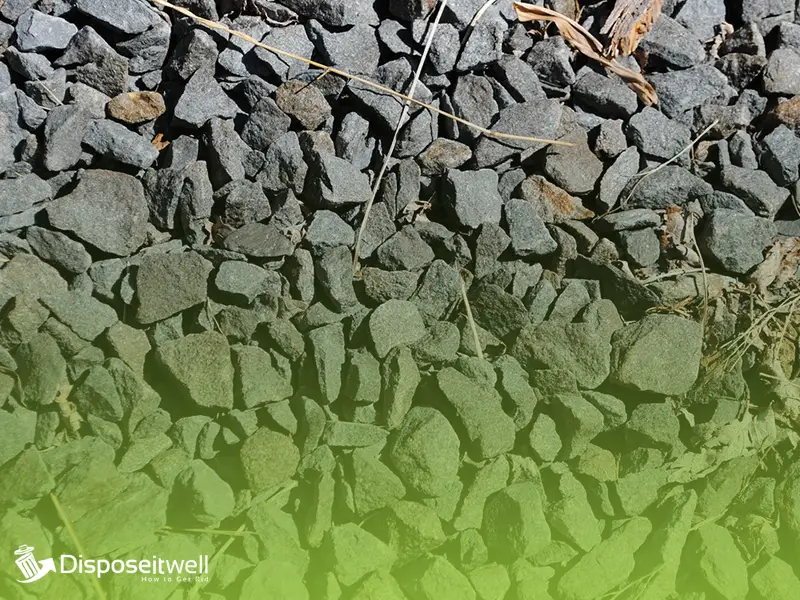Rocks and stones can accumulate from various activities such as landscaping and construction, or just from natural geological processes.
Whether you have unused rocks from a construction project or simply need to get rid of some rocks in your yard, proper disposal is important.
This guide will explain how to responsibly dispose of rocks, taking into consideration local regulations and environmental factors.
How To Dispose of Rocks?
When it comes to disposing of rocks, whether it’s from your garden, a landscaping project, or a construction site, proper methods are necessary to ensure both safety and environmental responsibility. Here we will outline some methods of how to dispose of rocks effectively:
● Recycling centers: Many recycling centers accept rocks and concrete, repurposing them for future construction projects. This method is a sustainable choice, as it reduces waste and conserves resources.
● Landscaping projects: Rocks can be repurposed for your own landscaping projects, such as creating a rock garden, building a retaining wall, or using them as edging for flower beds.
● Sell or donate: If your rocks are in good condition, consider selling them online or donating them to local community gardens, schools, or organizations in need of landscaping materials.
● Habitat restoration: Contact local environmental organizations to inquire about donating rocks for habitat restoration projects, such as stream bed stabilization or erosion control.
● Construction site disposal: Some construction sites may accept rock disposal as fill material. Contact local construction companies to inquire about their disposal requirements and if they accept rocks.
● Crushed rock and gravel: Smaller rocks can be crushed into gravel and used as a base for driveways, walkways, or other outdoor projects. You can rent a rock crusher or hire a professional to help with this process.
● Local landfills: While not the most environmentally friendly option, some landfills may accept rocks as part of their solid waste disposal. Contact your local waste management facility to learn about their rock disposal guidelines.
● Hire a Dumpster: If you’re disposing of a large number of rocks, it might be beneficial to rent a dumpster or skip. These containers are designed to handle heavy loads and can be easily hauled away by the rental company once filled.
Can Rocks Be Recycled?
Rocks, by their very nature, are a product of the Earth’s geological processes and have been around for millions of years. The question does however often arise about whether they are in fact recyclable or not.
Recycling in its traditional sense, involves the processing of waste materials into new products to prevent waste of potentially useful materials. By this definition, rocks might not fit the typical understanding of recyclable materials like plastic, paper, or metal. Yet, the concept of recycling rocks can still apply in a broader context.
Rocks can be used, reused, and repurposed multiple times, depending on the type and size of the rock. Large rocks can be used for landscaping or construction, while smaller rocks or pebbles can be used for various craft projects or ground cover. When we think about how to dispose of rocks, this reuse can be viewed as a form of recycling. However, unlike other recyclable materials, there’s no centralized system for rock recycling.
How To Repurpose Rocks?

Disposing of rocks can often seem like a daunting task, particularly when you have a large number to deal with. However, before considering disposal, it might be worth exploring some options to repurpose rocks. Here are three straightforward ways to do so:
● Craft and Decoration: Rocks can also be used in various crafts and decoration projects. With a little creativity, you can turn rocks into beautiful pieces of home decor.
For example, you can paint them in vibrant colors or designs to create unique garden markers, doorstops, or paperweights. Smaller rocks can be used in jewelry making, and larger ones can even be engraved or drilled to create candle holders.
● Drainage Solutions: Rocks can be utilized as part of drainage systems in your yard or garden. By placing rocks in low-lying areas or along the edges of driveways and walkways, you can help prevent soil erosion and direct water runoff. They can also be used to construct French drains, which help to alleviate waterlogged areas.
● Aquariums and Terrariums: Both small and large rocks can be repurposed as decorative elements in aquariums and terrariums. They can provide hiding places and resting spots for aquatic creatures, as well as create a more natural-looking environment. When using rocks in these settings, be sure to clean them thoroughly and ensure they are safe for your specific animals or plants.
How To Prepare Landscaping Rocks for Recycling?
In the world of landscaping, rocks are often utilized to enhance the aesthetic appeal of a garden or lawn. However, over time, these rocks may need to be replaced or removed, and proper disposal becomes necessary. Here we discuss the steps to prepare landscaping rocks for recycling:
Step 1: Sorting
The first step in preparing landscaping rocks for recycling is to sort them according to their size, shape, and type. This makes the recycling process more efficient and ensures that the rocks can be effectively repurposed. For example, separate large boulders from smaller pebbles, and group similar rock types together. Knowing how to dispose of rocks starts with proper organization.
Step 2: Cleaning
Once the rocks have been sorted, it’s essential to clean them thoroughly. This will remove any dirt, debris, or organic matter that may have accumulated over time. To clean the rocks, use a stiff brush or a pressure washer, taking care not to damage the surface. If you’re dealing with stubborn dirt, you can also use a mild detergent to help break down the grime. Cleaning is a crucial step when learning how to dispose of rocks responsibly.
Step 3: Inspecting for Contaminants
Before recycling landscaping rocks, it’s important to inspect them for contaminants that could hinder the recycling process. Check for any signs of paint, chemicals, or other foreign materials that may have come into contact with the rocks. If you find any contaminants, it’s necessary to remove them before recycling. This will ensure that the rocks are safe to be reused in other landscaping projects. Proper inspection is a vital aspect of how to dispose of rocks correctly.
Step 4: Packaging
After cleaning and inspecting the rocks, the next step is to package them for transportation to the recycling facility. Depending on the size and quantity of the rocks, you may need to use a variety of containers, such as heavy-duty plastic bags, plastic bins, or even wooden crates. Be sure to package the rocks securely to prevent any damage or spillage during transportation. Good packaging is an essential part of how to dispose of rocks effectively.
Conclusion:
Proper disposal of rocks is essential to maintain a clean and organized environment. There are various ways to responsibly manage their disposal, such as reusing or repurposing them, donating them, or selling them.
Additionally, exploring curbside pickup, municipal services, or local landfills and recycling centers can provide guidance on appropriate disposal methods.

Gemma Alexander has an M.S. in urban horticulture and a backyard filled with native plants. After working in a genetics laboratory and at a landfill, she now writes about the environment and recycling topics.

